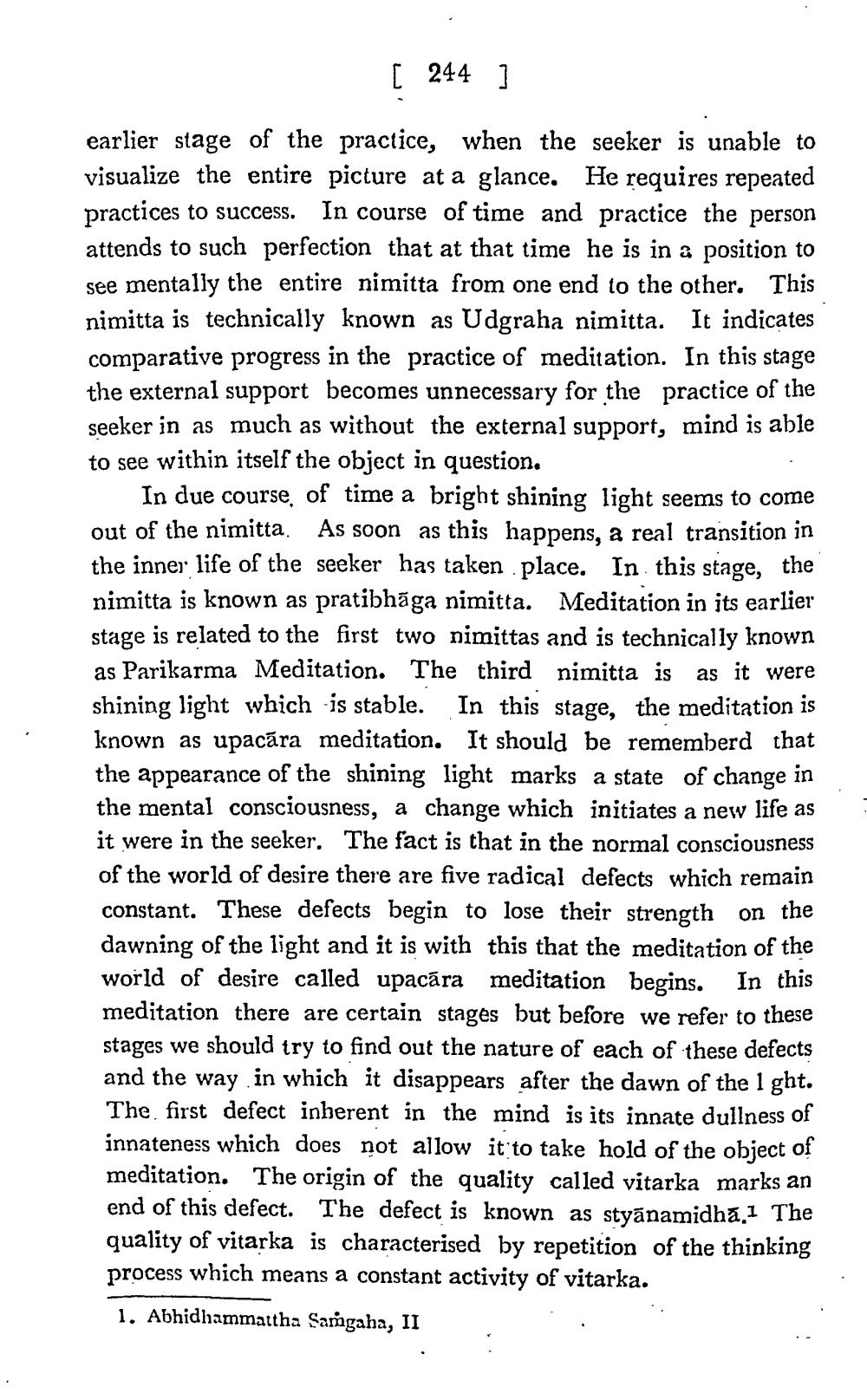________________
[ 244 ]
earlier stage of the practice, when the seeker is unable to visualize the entire picture at a glance. He requires repeated practices to success. In course of time and practice the person attends to such perfection that at that time he is in a position to see mentally the entire nimitta from one end to the other. This nimitta is technically known as Udgraha nimitta. It indicates comparative progress in the practice of meditation. In this stage the external support becomes unnecessary for the practice of the seeker in as much as without the external support, mind is able to see within itself the object in question.
In due course, of time a bright shining light seems to come out of the nimitta. As soon as this happens, a real transition in the inner life of the seeker has taken place. In this stage, the nimitta is known as pratibhāga nimitta. Meditation in its earlier stage is related to the first two nimittas and is technically known as Parikarma Meditation. The third nimitta is as it were shining light which is stable. In this stage, the meditation is known as upacara meditation. It should be rememberd that the appearance of the shining light marks a state of change in the mental consciousness, a change which initiates a new life as it were in the seeker. The fact is that in the normal consciousness of the world of desire there are five radical defects which remain constant. These defects begin to lose their strength on the dawning of the light and it is with this that the meditation of the world of desire called upacara meditation begins. In this meditation there are certain stages but before we refer to these stages we should try to find out the nature of each of these defects and the way in which it disappears after the dawn of the 1 ght. The first defect inherent in the mind is its innate dullness of innateness which does not allow it to take hold of the object of meditation. The origin of the quality called vitarka marks an end of this defect. The defect is known as styānamidha,1 The quality of vitarka is characterised by repetition of the thinking process which means a constant activity of vitarka.
1. Abhidhammattha Samgaha, II




